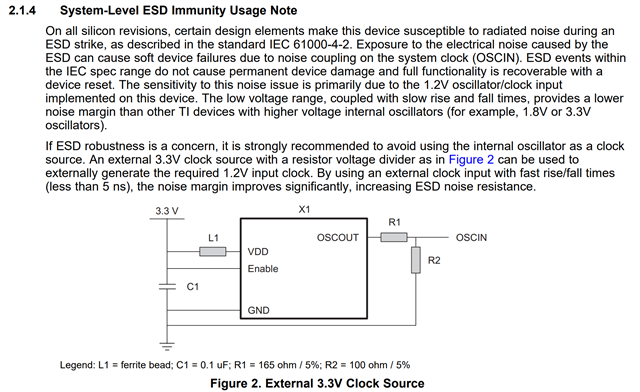Hi,
According to the TMS320C6748 Fixed- and Floating-Point DSP Silicon Revisions 2.3, 2.1, 2.0, 1.1 and 1.0, external oscillator should be used for ESD consideration.

But with the above suggested resistor, 3.3/265=12.5mA, concerning the 50% duty cycle, 6.25mA current is wasted on the resistor.
6.25mA is too much, because when our product works on low power mode, the system is only 35mA@3.8V.
Is there any better way considering the power consumption and the ESD?
Thank you.
Frank

